Site Links
Howdy, Stranger!
It looks like you're new here. If you want to get involved, click one of these buttons!
Quick Links
Categories
Who's Online (0)
T/S and Speaker Driver Re/DCR comparison
Given the recent post about a high precision LCR meter, I had questioned how useful this is for obtaining driver precise DCR of a driver over a standard multimeter or some curve fitting estimation in software, since "sine sweep" implies an AC signal, and AC signal is a requirement for most audio gear that will be used with the software due to the coupling capacitors to remove the DC component.
I wanted to do a deeper dive on driver Re to maintain my sanity. From another recent thread, I had questioned how useful it is to get out a multimeter and measure the DC resistance of a driver over just letting the software estimate it. This test compares various T/S extraction software and their ability to extract an Re value, if that ability exists. As well, I compare the cabinet model of T/S determination using different software calculations of the exact same impedance data.
I took my Fluke 179 meter and measured a driver, the meter only has 1 decimal place of precision so +/- 0.1 ohm is as good as it gets, and measured 5.7 ohms. I have another low end Wavetek meter that also measured 5.7 ohms. Shorted leads measured 0.1 ohms. If we really want to dig down to the precision here, the measurement is +/- 0.5 ohms due to the resolution, so the measurement is really 5.65 to 5.75, and the shorted leads are 0.05 to 0.15 ohms, making the driver Re by the meter anywhere from 5.5 to 5.7 ohms. For the sake of this example, I am just using 5.7 ohms as the baseline.
I don't have a Dayton woofer tester anymore, but I have ARTA, REW, VituixCAD and SoundEasy available to me for this comparison.
ARTA
The biggest problem I see is the Re estimation in ARTA. My measurement is clean down to 5Hz, and I zoomed right in on it, however can't see why the software would determine 6.28 ohms given that the impedance at 5Hz is in the 5.75 ohm range. Fail for ARTA, recommend manual entry of Re for this software. If the estimated Re of 6.28 ohms is used, all other T/S parameters are skewed as a result. Using a manual entry of 5.7 ohms, T/S is similar to the rest.
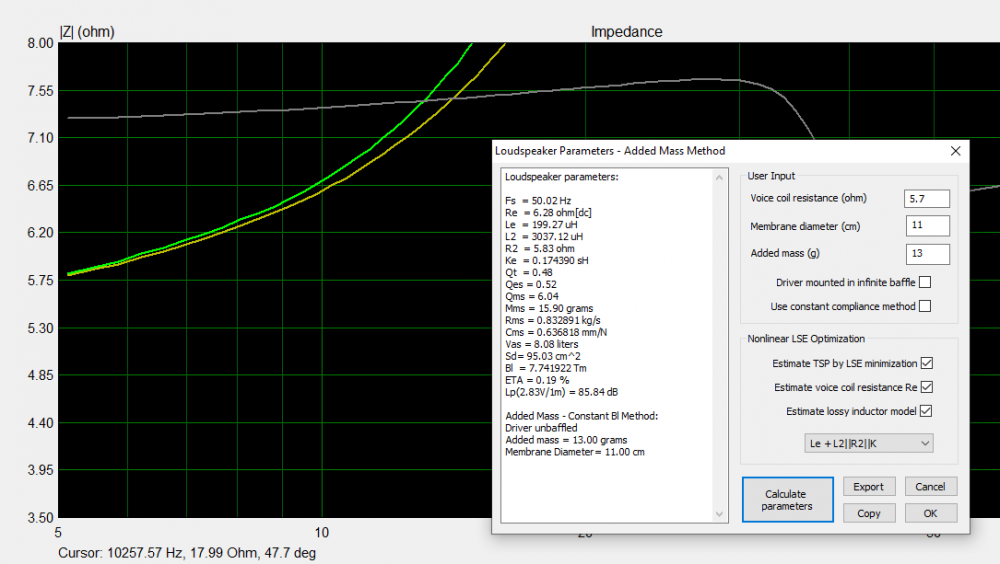
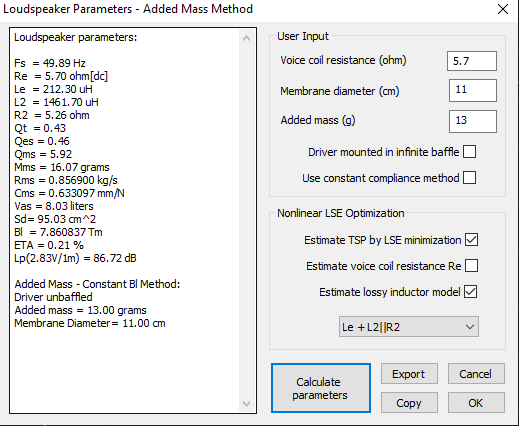
VituixCAD
VituixCAD doesn't do any estimation of Re, it requires you to manually enter this value. T/S result is very similar to ARTA when using the same values and measurements.
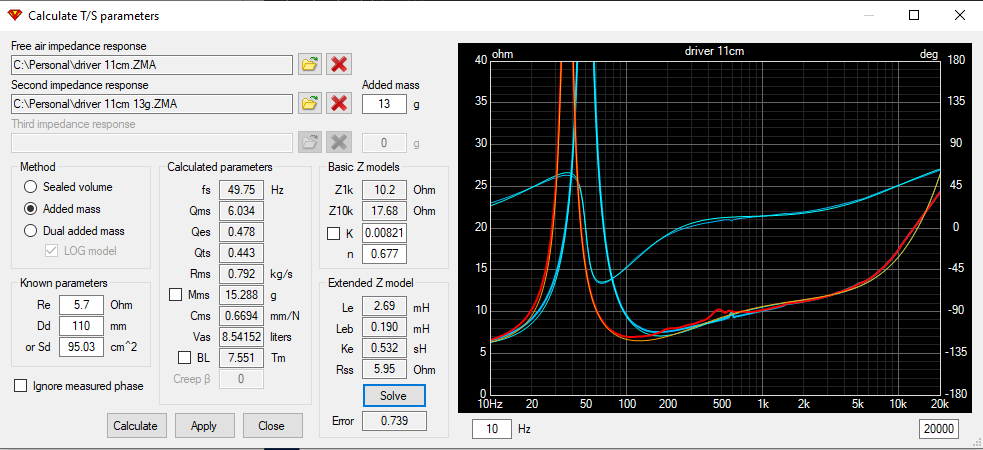
REW
REW is quite nice that it shows the curve fitting down to 2Hz, but also requires a manual DCR entry for Re estimation, its a bit odd but the estimated Re is not the same value as the manual meter reading. For consistency I imported the measurements from ARTA, the speaker was not re-measured. In this case, it came up with a value of 5.428 ohms, which is a bit on the low side compared to the multimeter.
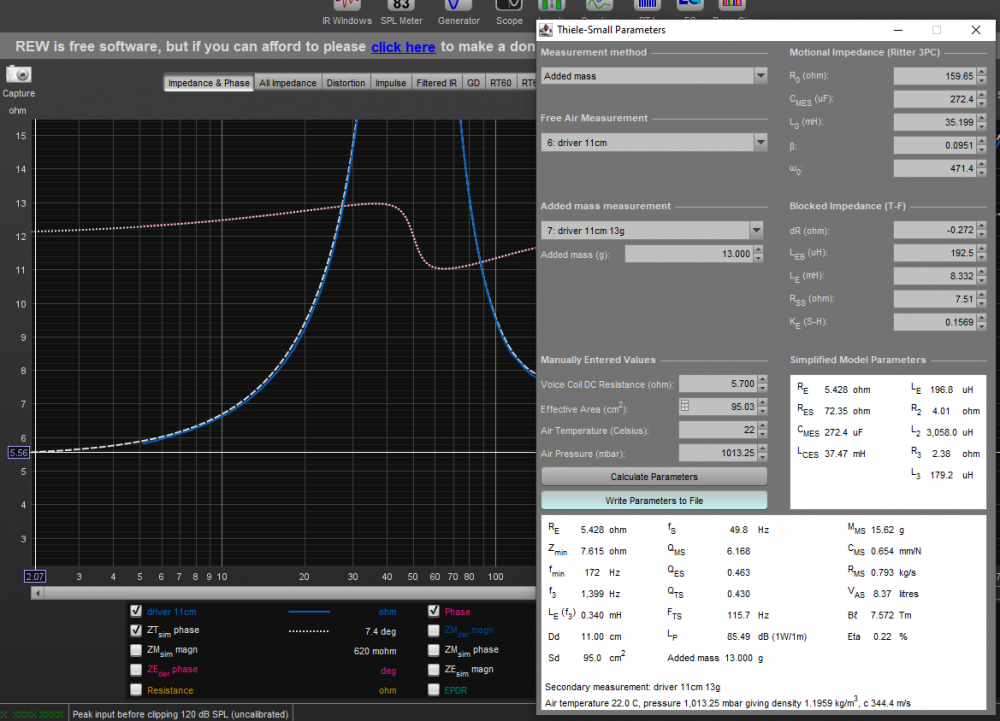
SoundEasy
SoundEasy also requires manual entry for Re, so it intends for this to be provided from a manual multimeter reading. Again, for consistency I imported the measurements from ARTA so it utilized the exact same impedance measurement for it's calculations.
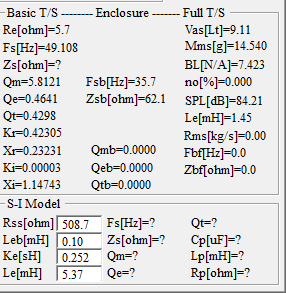
How do they compare?
For comparison I entered all the T/S parameters into VituixCAD. VituixCAD supports pasting information directly copied from ARTA and REW, so the process takes only seconds here, SoundEeasy is the odd one out requiring manual entries.
Apart from ARTA's failure to estimate Re properly, all parameters modelled within 0.5dB of each other. Top to bottom is SoundEasy, REW, VituixCAD, ARTA (manually entered Re), then the solid line at the bottom is ARTA with Re estimation. If I learned anything from this exercise, it's to measure with ARTA, then use something else to determine T/S parameters as it's results are vary the most from the other methods. REW and ARTA are the only options used here that allow for estimation of Re, and while REW estimated a value on the low side, the cabinet simulation is indifferent from the others.
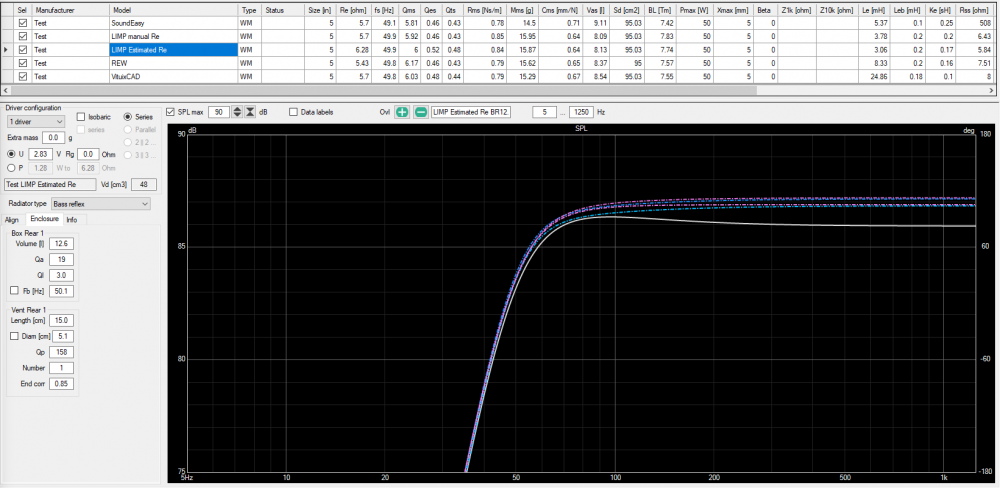
But what about that meter resolution?
Right, I used 5.7 ohms here, that could be as low as 5.5 ohms. If I recalculate using 5.5 ohms instead of 5.7, this 3.6% difference in Re makes for a 0.3dB difference in sensitivity of the driver.




Comments
I did question the ARTA developer on the Re estimation discrepancy. He didn't seem to care too much about it, said the Re estimation is only in there because some users asked for it, he recommends using a multimeter and manually entering the value.
I measured a 10 ohm 2% resistor.
DATS V2 10.064
Fluke 8060A 10.05
I also measured a Peerless woofers resistance.
DATS V2 6.309
Fluke 8060A 6.25
The Fluke 8060A is rated: ±(0.07%+2)
Ron
Thanks Ron. DATS appears to be an improvement over the old woofer tester, with some greater attention to accuracy and precision. They've even got a document with detail of their own testing / verification.
https://www.daytonaudio.com/images/resources/390-806-dats-v2-white-paper.pdf
At the end of the day, DATS or a resistor jig is all doing the same thing, it just creates a voltage divider across the component being tested. Calibration, noise, and software curve fitting algorithms will be the determining factors in how well it works. For audio components at audio frequencies, the average sound card is perfectly suited to the task. The only real outlier observed here is that Re estimation in ARTA/LIMP sucks.
I was having problems with SE the other day but resolved that tonight and measured my 10 ohm resistor. It was just under .1 ohm higher.
Ron